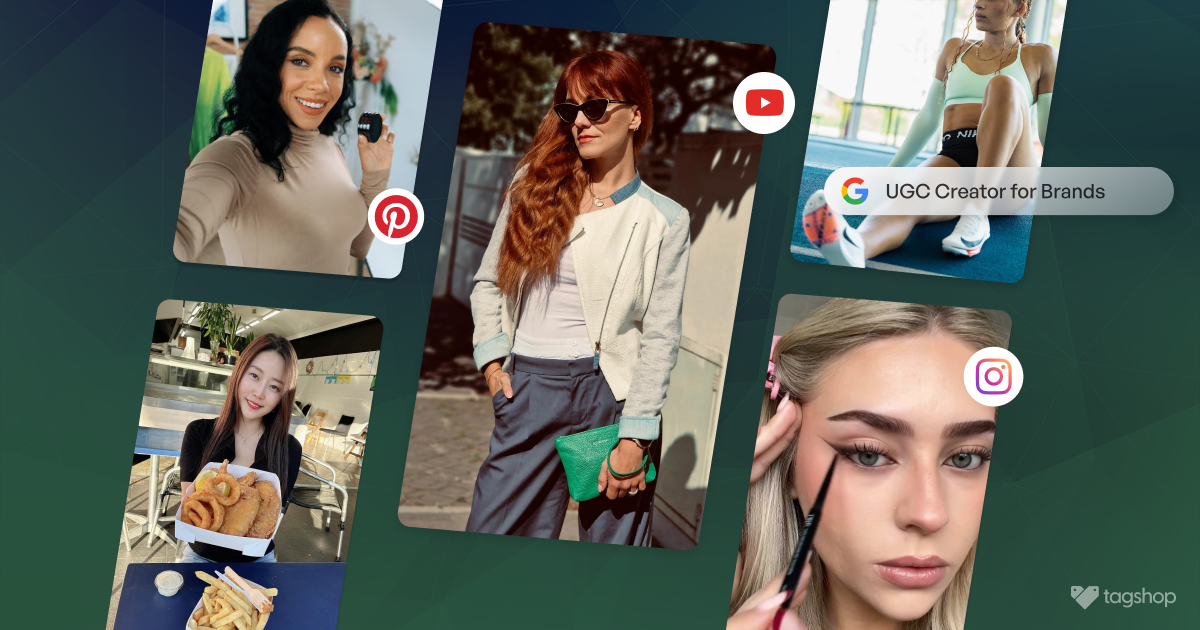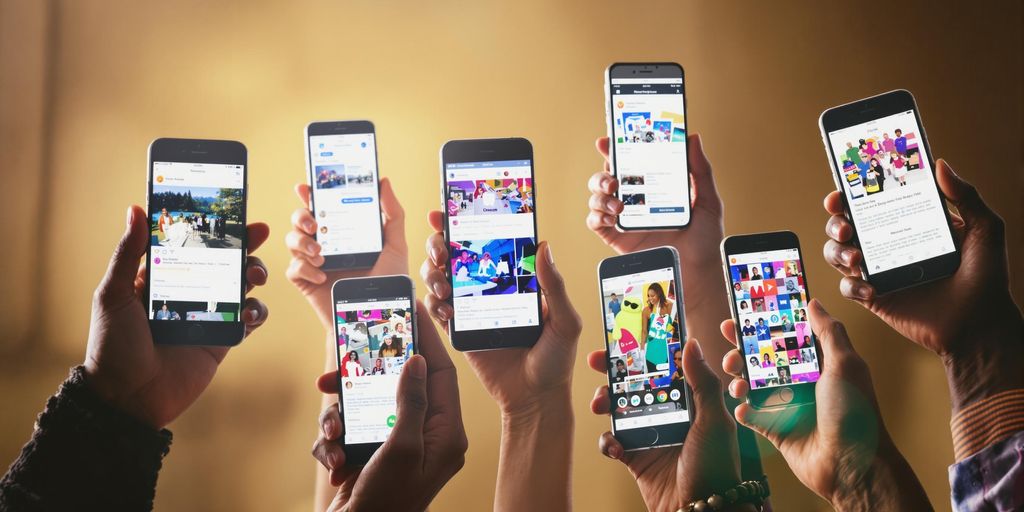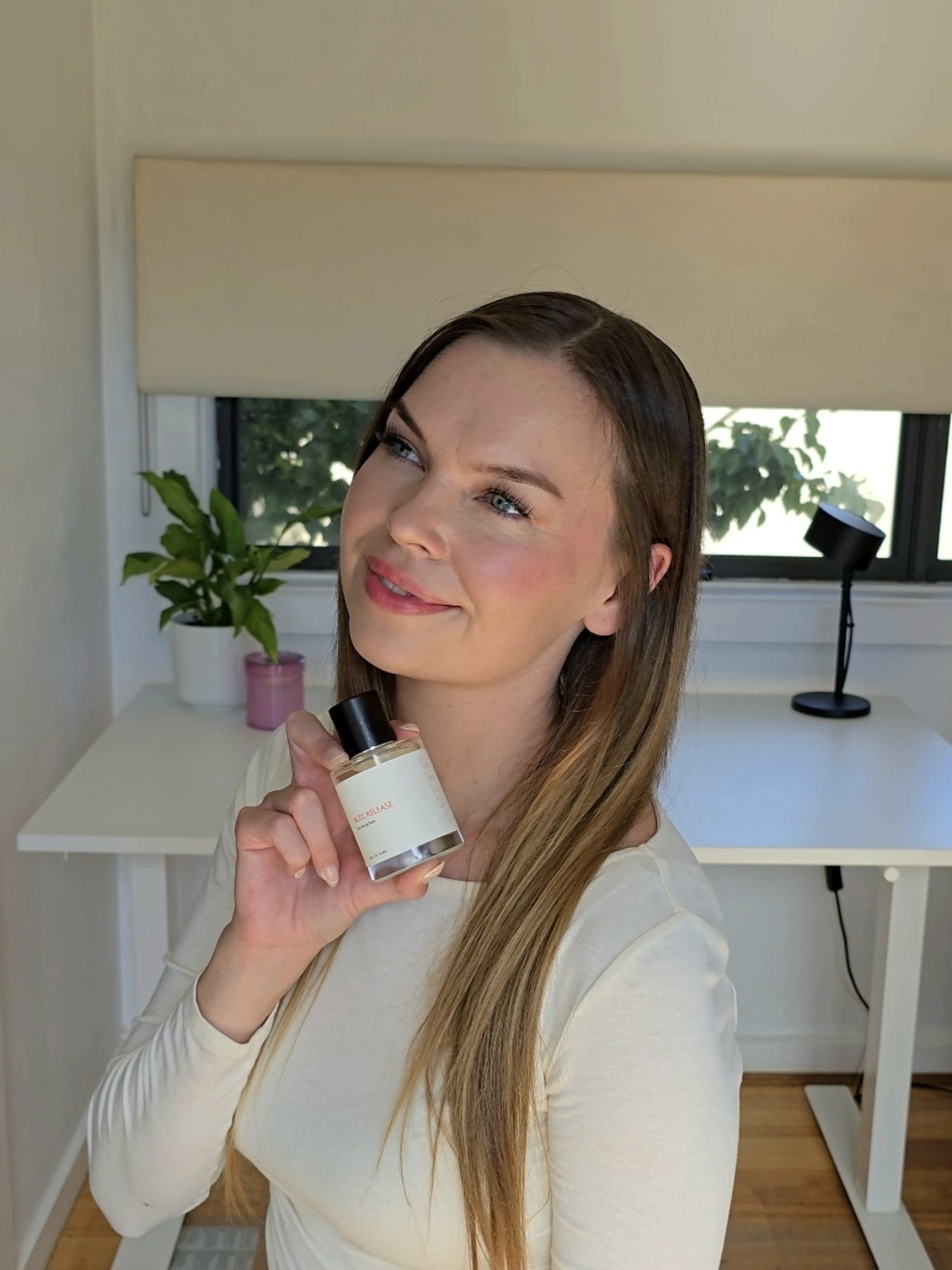In 2025, the landscape for User-Generated Content (UGC) creators is evolving rapidly. If you’re looking to secure brand deals, it’s essential to understand the ins and outs of this dynamic field. This article will guide you through the key steps to build your creator brand, find the right partners, craft effective pitches, and maintain long-lasting relationships with brands. Let’s explore how you can master the art of securing brand deals for UGC creators and thrive in this competitive environment.
Key Takeaways
- Identify your niche to stand out in the crowded UGC space.
- Research brands thoroughly to ensure alignment with your values.
- Craft personalized pitches that highlight your unique strengths.
- Negotiate with confidence by understanding brand budgets and your worth.
- Build relationships through consistent communication and engagement.
Crafting Your Unique Creator Brand
Defining Your Niche
Alright, let’s talk about finding your thing. What makes you, you? In the crazy world of content creation, standing out is half the battle. Don’t just jump on the latest trend; think about what you’re genuinely passionate about. What could you talk about for hours without getting bored? That’s probably your niche. It could be anything from sustainable living to obscure video games. The more specific, the better! This helps you attract a dedicated audience who are actually interested in what you have to say.
Finding your niche isn’t just about picking a topic; it’s about finding the intersection of your passions and what people actually want to see. It’s where the magic happens.
Building a Personal Brand
Okay, you’ve got your niche. Now it’s time to build your personal brand. Think of it like this: you’re not just a creator; you’re a brand. What’s your vibe? Are you funny and relatable? Or more serious and informative? Your personal brand is how people perceive you, so make sure it’s authentic. This means everything from your visual style (logos, colors, fonts) to your tone of voice in your content. Consistency is key here. Use the same profile picture across all platforms, stick to a consistent color scheme, and always stay true to your core values. If you’re all about positivity, don’t suddenly start posting negative rants. People will notice, and it can damage your credibility. authentic content is key to building trust.
Showcasing Your Best Work
Time to show off! You’ve got amazing content, right? Make sure it’s easy for brands to find. This is where a portfolio comes in handy. Think of it as your creator resume. Highlight your best videos, photos, or blog posts. Include stats like views, likes, and comments to show brands that you know how to engage an audience.
- Curate your top-performing content.
- Include testimonials from past collaborations.
- Make it visually appealing and easy to navigate.
Don’t forget to Sign up and create your creator profile on platforms designed for connecting creators with brands. This makes it even easier for brands to discover you and see what you’re all about. Think of it as your digital storefront. Make sure it’s always up-to-date and reflects your best work. Here’s a quick example of what a portfolio could include:
| Content Type | Description | Metrics |
|---|---|---|
| Video | Product Review | 100K Views, 5K Likes |
| Blog Post | How-To Guide | 50K Reads, 2K Shares |
| Photo | Sponsored Post | 20K Likes, 1K Comments |
Researching Brands Like a Pro

Okay, so you’re ready to snag some sweet brand deals? Awesome! But before you start firing off emails, you gotta do your homework. Think of it like this: you wouldn’t walk into a job interview without knowing anything about the company, right? Same deal here. Let’s get into how to really dig into potential brand partners.
Identifying Potential Partners
First things first, where do you even start looking? Think about the products you already use and love. Are there any brands that align with your niche? Make a list! Don’t just stick to the big names either; sometimes smaller brands are more willing to take a chance on up-and-coming creators. Also, keep an eye on what other creators in your space are doing. Who are they working with? That can give you some great ideas. Remember, UGC is set to dominate, so there are tons of opportunities out there.
Understanding Brand Values
Alright, you’ve got a list of potential brands. Now it’s time to put on your detective hat. Head to their website and social media pages. What’s their mission statement? What kind of content do they usually post? What are they passionate about? You want to make sure their values align with yours. If you’re all about sustainability and they’re promoting fast fashion, it’s probably not a good fit.
Analyzing Competitor Collaborations
This is where things get really interesting. Take a look at brands that are similar to the ones you’re targeting. Who are they working with? What kind of campaigns are they running? What seems to be working, and what’s falling flat? This can give you valuable insights into what brands in that industry are looking for. Plus, it can spark some creative ideas for your own pitches. Don’t just copy what others are doing, but use it as inspiration to come up with something even better. Remember to check out these user-generated content statistics to see what’s trending!
Mastering the Perfect Pitch
Okay, so you’ve got your brand all set, you know who you want to work with, now comes the fun part: actually pitching to them. It’s like asking someone out on a date, but instead of romance, you’re offering killer content. No pressure, right?
Creating a Compelling Narrative
Think of your pitch as a story. Not just any story, but one where the brand is the hero, and you’re the awesome sidekick who helps them win. Start with a hook – something that grabs their attention right away. Maybe you saw their latest campaign and have a brilliant idea to make it even better. Or perhaps you noticed a gap in their content strategy that you can fill. Whatever it is, make it personal and show that you’ve actually done your homework. Don’t just say you love their brand; show them why you love their brand and how you can make them even more lovable.
Highlighting Your Value Proposition
This is where you show off a little (but not too much!). What makes you different from every other UGC creator out there? Do you have a knack for creating viral TikToks? Are you a whiz at writing engaging Instagram captions? Do you have a super-loyal following that hangs on your every word? Whatever your superpower is, make sure the brand knows about it. And don’t just list your skills; explain how those skills will translate into real results for them. More engagement? Increased brand awareness? Higher conversion rates? Spell it out!
Using Visuals to Enhance Your Pitch
Okay, words are great, but visuals are even better. Include examples of your best work in your pitch. This could be screenshots of your most successful posts, a link to your online portfolio, or even a short video showcasing your skills. Make sure your visuals are high-quality and relevant to the brand you’re pitching. And if you really want to impress them, create a mock-up of what a collaboration with you might look like. This shows that you’re not just talking the talk; you’re actually walking the walk. Also, make sure your media kit is up to date. Engagement statistics, case studies, content examples – all of this helps establish credibility and trust. If you need help creating a media kit, try to LOGIN TO UGCLAUNCH.
Remember, your pitch is your first impression. Make it count. Be professional, be creative, and most importantly, be yourself. Brands want to work with authentic creators who are passionate about what they do. So let your personality shine through, and don’t be afraid to show them what you’ve got.
Here’s a quick checklist to make sure you’re on the right track:
- Personalize your pitch for each brand.
- Showcase your unique skills and value.
- Include visuals to bring your pitch to life.
- Highlight the mutual benefits of the collaboration.
- Keep it concise and easy to read.
Navigating the Negotiation Process
Okay, so you’ve got a brand interested. Awesome! Now comes the part where you talk money and deliverables. Don’t sweat it; it’s all about knowing your worth and finding a deal that works for everyone. Let’s get into it.
Understanding Brand Budgets
Brands have budgets, duh. But understanding those budgets? That’s the key. Do some digging. See what they’ve paid other creators. Look at the scope of the campaign. Are they running ads? Is it a one-off post or a series? All this info helps you gauge what they’re willing to spend. Don’t be afraid to ask directly about their budget range early on. It saves everyone time.
Setting Your Rates
This is where a lot of creators get tripped up. What are you really worth? Consider your audience size, engagement rate, the type of content, and the usage rights. Are they getting exclusive rights? Is it just for social media, or can they use it in ads? All of that affects your price. Don’t undervalue yourself. Have a base rate, and be ready to adjust based on the project.
Here’s a super basic rate card example:
| Deliverable | Rate |
|---|---|
| Single Instagram Post | $XXX |
| TikTok Video | $YYY |
| Blog Post | $ZZZ |
Finding Win-Win Solutions
Negotiation isn’t about winning; it’s about finding a solution that benefits both you and the brand. Maybe they can’t meet your full rate, but they can offer a longer-term partnership or give you extra exposure. Be open to creative solutions. Think about what’s most important to you. Is it the money, the exposure, or the creative freedom? Focus on those things, and be willing to compromise on others. Remember to have effective influencer contract negotiation to ensure a smooth partnership.
Don’t be afraid to walk away. If a brand is being unreasonable or doesn’t value your work, it’s better to find a partner who does. There are plenty of brands out there, and your time and talent are valuable.
Building Long-Term Relationships

So, you’ve landed a brand deal – awesome! But don’t think it ends there. The real magic happens when you turn a one-time gig into a lasting partnership. Think of it like dating; you want to impress them enough to stick around, right?
Following Up Effectively
Okay, so you finished the campaign. Don’t just ghost them! A simple thank-you email goes a long way. Share the results – how many views, likes, comments, etc. Brands love seeing the impact you made. And, most importantly, ask for feedback. What did they like? What could be improved? This shows you’re serious about growing and improving products together.
Engaging on Social Media
Don’t just wait for them to reach out. Tag them in relevant posts, comment on their content, and generally be a supportive member of their online community. It’s like being a good friend – you’re there to cheer them on. This consistent engagement keeps you top-of-mind and shows you’re genuinely interested in their brand. Plus, it’s a great way to establish trust with their audience, too.
Creating Collaborative Opportunities
Think beyond the initial campaign. Got an idea for a new product line that aligns with their brand? Pitch it! See an opportunity for a joint giveaway? Suggest it! The more you can brainstorm ways to work together, the more valuable you become. It shows you’re not just in it for the quick buck, but you’re invested in their long-term success. Maybe you can even help them drive advocacy with your unique audience.
Building strong relationships with brands is all about showing them you’re reliable, creative, and genuinely invested in their success. It’s not just about the money; it’s about creating a win-win situation where both you and the brand benefit from the partnership. Treat every collaboration like a chance to build something amazing, and you’ll be well on your way to securing those long-term deals.
Leveraging Social Proof for Success
Alright, so you’ve got your brand all set, you’re finding brands to work with, and you’re pitching like a pro. What’s next? It’s time to show everyone why they should work with you. That’s where social proof comes in. Think of it as your reputation doing the talking for you. It’s all about showing, not just telling, how awesome you are.
Showcasing Testimonials
Got some love from past brand partners? Flaunt it! Testimonials are gold. They’re like mini-ads where someone else is singing your praises. Make sure they’re genuine and specific. A generic “Great to work with!” doesn’t cut it. You want something like, “[Creator’s Name] really understood our brand and created content that boosted our engagement by 30%!” That’s the good stuff. You can ask for testimonials after each collaboration. Keep them organized and ready to share in your pitch deck or on your website. This helps establish credibility and trust.
Highlighting Past Collaborations
Don’t just list the brands you’ve worked with; show off the actual content you created for them. Include screenshots, links, or even better, embed the content directly into your portfolio. Talk about the goals of the campaign, your role, and the results you achieved. Did you drive sales? Increase brand awareness? Get a ton of engagement? Let those numbers shine! It’s like saying, “Hey, I did this for them, and I can do it for you too!” Consider these points:
- Showcase a variety of collaborations to demonstrate your versatility.
- Focus on collaborations that align with the brand you’re pitching to.
- Quantify your results whenever possible.
Utilizing Engagement Metrics
Numbers don’t lie, right? Well, they can be manipulated, so be honest and transparent. Share your engagement rates (likes, comments, shares, saves) on past content. This shows brands that you have an active and engaged audience. But don’t just throw numbers at them. Explain what those numbers mean. For example, “My average engagement rate is 5%, which is significantly higher than the industry average of 2%.” That’s how you turn data into a compelling story. Remember to:
- Track your engagement metrics consistently.
- Compare your metrics to industry benchmarks.
- Highlight any viral content you’ve created.
Social proof is more than just bragging; it’s about building trust and demonstrating your value. By showcasing testimonials, highlighting past collaborations, and utilizing engagement metrics, you can create a compelling case for why brands should work with you. It’s about proving that you’re not just another creator; you’re a valuable partner who can help them achieve their goals.
Staying Ahead of Industry Trends
Okay, so you’ve got your brand, you’re pitching like a pro, and you’re building those long-term relationships. Awesome! But the world of UGC is like, a living, breathing thing. It changes constantly. To really kill it in 2025, you gotta stay on top of what’s new. No pressure, right?
Monitoring Market Changes
Think of market changes as the weather. You wouldn’t go outside in a blizzard wearing shorts, would you? Same deal here. Keep an eye on what brands are doing, what kind of content is popping off, and what the general vibe is. Are people suddenly all about short-form video? Is there a new platform everyone’s obsessed with? Pay attention! You can use tools like Google Trends, set up alerts for keywords related to UGC, and just generally be a social media sponge.
Adapting to New Platforms
Remember when TikTok was just that app the kids were using? Now look at it! New platforms are always emerging, and some of them will be HUGE for UGC. Don’t be afraid to jump in and experiment. You don’t have to master every single one, but at least understand what they’re about and how you might be able to use them. Maybe check out some influencer marketing strategies to get some ideas.
Innovating Your Content Strategy
Okay, this is where the fun begins. Don’t just copy what everyone else is doing. Think about how you can put your own spin on things. What makes you unique? How can you bring that to your content? Maybe it’s trying out a new format, experimenting with different editing styles, or focusing on a super-specific niche. The key is to be creative and always be testing new things. Also, consider how user-generated content can play a role in your content strategy.
Staying ahead isn’t about being perfect; it’s about being willing to learn, adapt, and try new things. The UGC world rewards those who are curious and innovative. So, go out there and make some magic!
Wrapping It Up!
So there you have it! You’re all set to start reaching out to brands and snagging those deals. Don’t just sit there—get out there and make it happen! If you’re scratching your head about which brands to target, check out our guide on finding the right ones to work with. And hey, if you found this article helpful, share it with your fellow UGC creators. Let’s spread the knowledge and help each other succeed! 🥳
Frequently Asked Questions
What is UGC and why is it important?
UGC stands for User-Generated Content. It’s important because it shows real people using and enjoying a product, making it feel more trustworthy to others.
How can I find brands to work with?
You can find brands by researching online, checking social media, and looking for companies that match your style and niche.
What should I include in my pitch to brands?
Your pitch should have a clear story about who you are, what you can offer, and why you love the brand. Include examples of your best work!
How do I set my rates for brand deals?
You can set your rates by looking at what similar creators charge and considering your experience and the value you bring to the brand.
How can I build a good relationship with brands?
Stay in touch after your first deal, engage with them on social media, and look for ways to work together again in the future.
Why is social proof important for UGC creators?
Social proof, like testimonials and past collaborations, shows brands that you are reliable and trusted by others, making them more likely to work with you.













